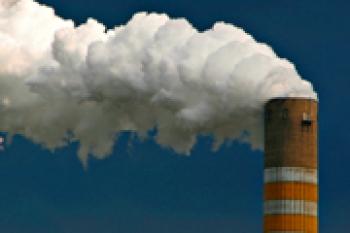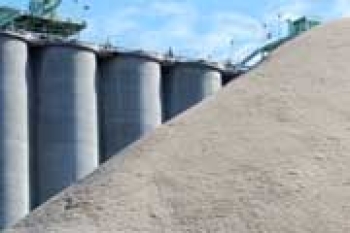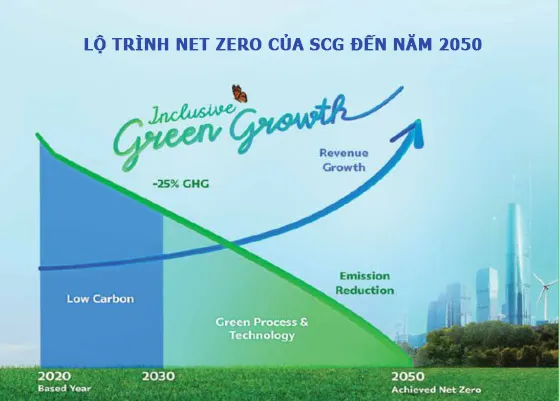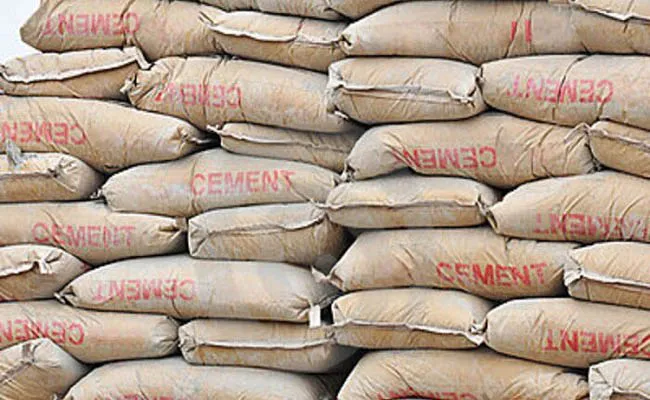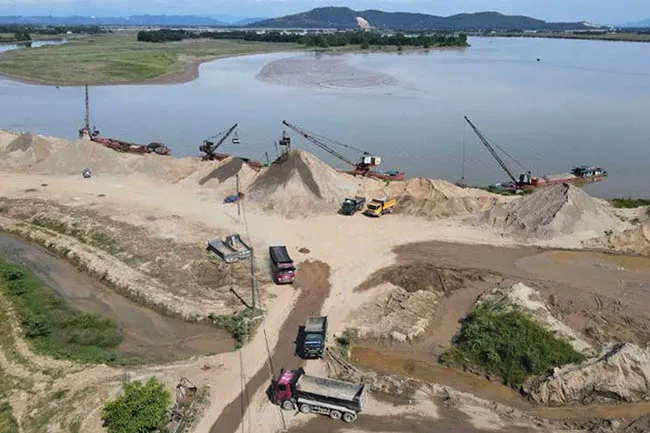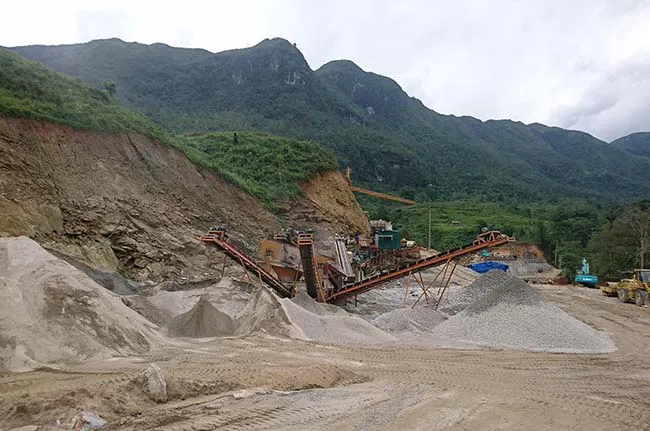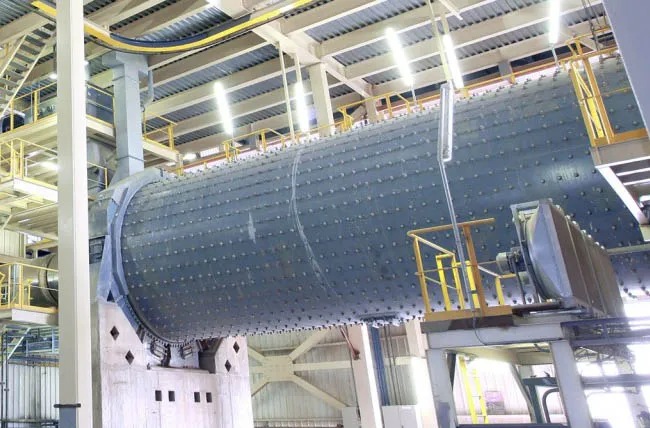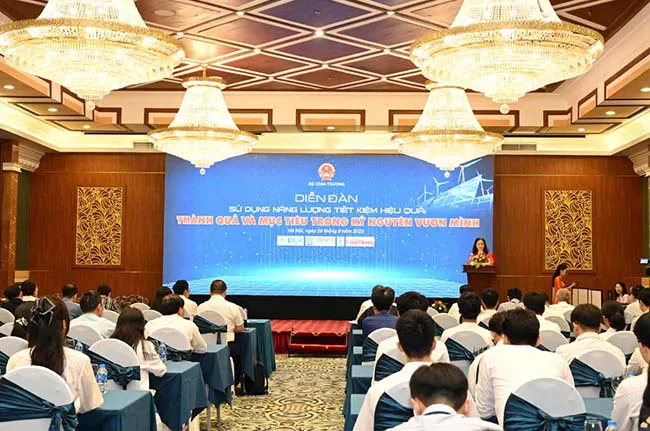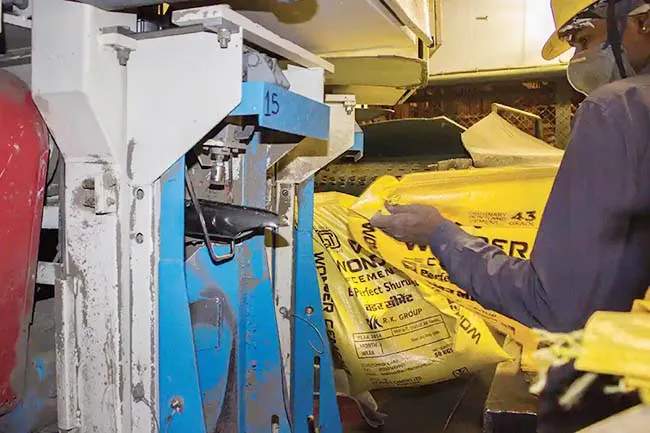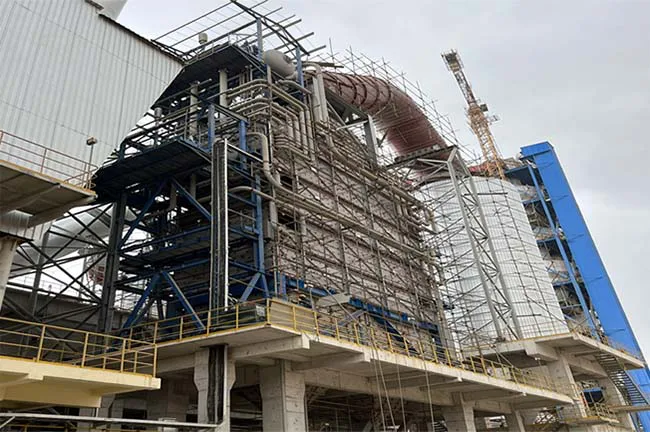Portland cement, the basic ingredient of concrete, is a closely controlled chemical combination of calcium, silicon, aluminum, iron and small amounts of other ingredients to which gypsum is added in the final grinding process to regulate the setting time of the concrete. Lime and silica make up about 85% of the mass. Common among the materials used in its manufacture are limestone, shells, and chalk or marl combined with shale, clay, slate or blast furnace slag, silica sand, and iron ore.
Each step in manufacture of portland cement is checked by frequent chemical and physical tests in plant laboratories. The finished product is also analyzed and tested to ensure that it complies with all specifications.
Two Manufacturing
Processes
Two different processes, "dry" and
"wet," are used in the manufacture of portland cement.
When rock is
the principal raw material, the first step after quarrying in both processes is
the primary crushing. Mountains of rock are fed through crushers capable of
handling pieces as large as an oil drum. The first crushing reduces the
rock to a maximum size of about 6 inches. The rock then goes to
secondary crushers or hammer mills for reduction to about 3 inches
or smaller.
In the wet process, the raw materials, properly proportioned, are
then ground with water, thoroughly mixed and fed into the kiln in the form of a
"slurry" (containing enough water to make it fluid). In the dry process,
raw materials are ground, mixed, and fed to the kiln in a dry state. In other
respects, the two processes are essentially alike.
The raw material is
heated to about 2,700 degrees F in huge cylindrical steel rotary kilns
lined with special firebrick. Kilns are frequently as much as 12 feet in
diameter large enough to accommodate an automobile and longer in many
instances than the height of a 40-story building. Kilns are mounted with the
axis inclined slightly from the horizontal. The finely ground raw material or
the slurry is fed into the higher end. At the lower end is a roaring blast of
flame, produced by precisely controlled burning of powdered coal, oil or gas
under forced draft.
As the material moves through the kiln, certain
elements are driven off in the form of gases. The remaining elements unite to
form a new substance with new physical and chemical characteristics. The new
substance, called clinker, is formed in pieces about the size of
marbles.
Clinker is discharged red-hot from the lower end of the kiln
and generally is brought down to handling temperature in various types of
coolers. The heated air from the coolers is returned to the kilns, a
process that saves fuel and increases burning
efficiency
Anh Van- by : www.cement.org


